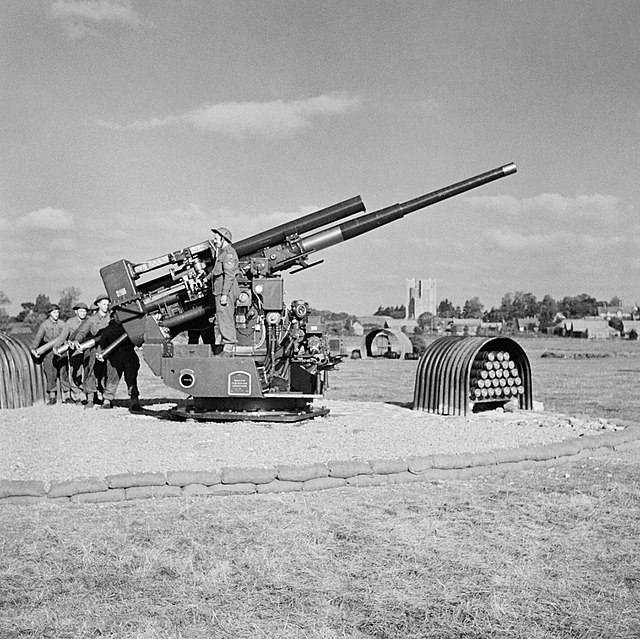The QF 3-inch 20 cwt anti-aircraft gun became the standard anti-aircraft gun used in the home defence of the United Kingdom against German Zeppelins airships and bombers and on the Western Front in World War I. It was also common on British warships in World War I and submarines in World War II. 20 cwt referred to the weight of the barrel and breech, to differentiate it from other 3-inch guns. While other AA guns also had a bore of 3 inches (76 mm), the term 3-inch was only ever used to identify this gun in the World War I era, and hence this is what writers are usually referring to by 3-inch AA gun.
Aboard HMS Royal Oak in World War I
Guns on 4-wheeled trailers with Vickers Predictor at left, Australia c. 1937
Demonstration of towing on 2-wheeled travelling platform
Demonstration of deployment for action on cruciform travelling platform with wheels removed
The QF 3.7-inch AA was Britain's primary heavy anti-aircraft gun during World War II. It was roughly the equivalent of the German Flak 8.8 cm and American 90 mm, but with a slightly larger calibre of 3.7 inches, approximately 94 mm. Production began in 1937 and it was used throughout World War II in all theatres except the Eastern Front. It remained in use after the war until AA guns were replaced by guided missiles beginning in 1957.
A 3.7-inch gun on a travelling carriage in London in 1939
A static 3.7-inch gun assigned to the 127th Heavy Anti-Aircraft Regiment, mounted on a Pile platform at Orford, Suffolk, October 1944
A 3.7-inch anti-aircraft gun towed by an AEC Matador at Burrow Head, Scotland, early 1944.
A No. 1 Mark III Predictor that was used with the QF 3.7








